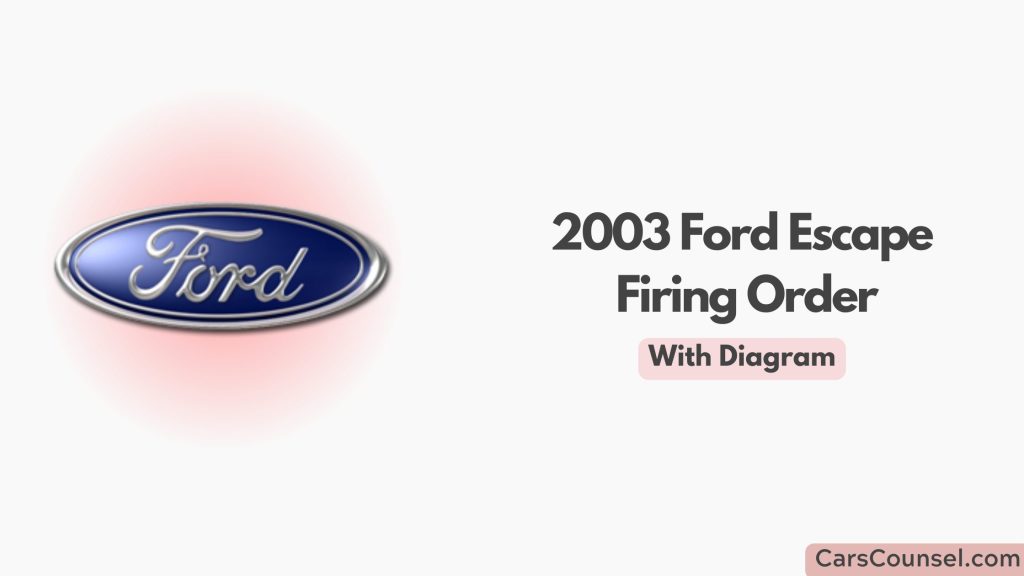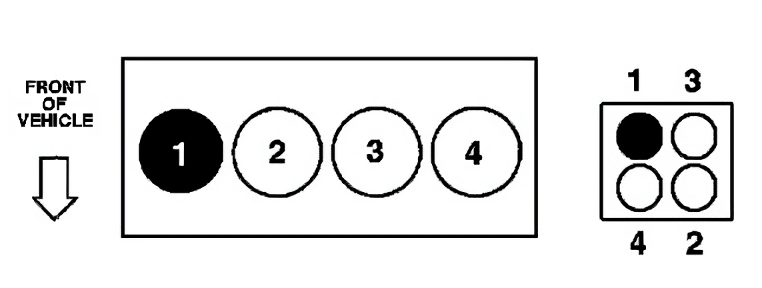To guarantee peak performance from your 2003 Ford Escape, you need to stick to the precise firing order, which follows a 1-3-4-2 sequence. This pattern is not random—it’s designed to minimize engine vibration and improve fuel efficiency and power output.

Most importantly, having this accurate firing order can assist you in diagnosing when the symptoms suggest a tune-up necessity, like rough idling, decreased fuel efficiency, power loss, or frequent engine misfires. Drawing connections between cylinder arrangements, ignition sequences, and the firing order of other similar vehicles, such as the Toyota RAV4 and Honda CR-V, could further enhance your understanding and simplify your troubleshooting process.
Quick Navigation
Key Takeaways
- The 2003 Ford Escape follows a 1-3-4-2 firing order for optimal engine performance.
- Cylinder one leads the sequence in the firing order, followed by cylinders three, four, and two.
- The precise firing order minimizes engine vibration and improves fuel efficiency in the 2003 Ford Escape.
- A disruption in the firing order can significantly affect the performance of the Ford Escape.
- Familiarity with the firing order is crucial in diagnosing potential issues and enhancing vehicle performance.
Understanding the Firing Order

To grasp the firing order of your 2003 Ford Escape, it’s vital to understand that this sequence, specifically 1-3-4-2, orchestrates the ignition of each cylinder to optimize engine performance. This ignition sequence is like a well-rehearsed dance, ensuring smooth operation and peak engine performance.
The number one cylinder, located at the front of the engine, takes the lead in this sequence. It fires first, followed by cylinders 3, 4, and 2 in quick succession. This firing order not only helps to diminish engine vibration but also boosts fuel efficiency and power output.
When this sequence is disrupted, your Escape won’t perform as it should. Therefore, having a strong understanding of your car’s firing order is essential to maintain its peak performance.
Signs of Tune-Up Necessity
If you’re noticing symptoms such as rough idling, decreased fuel efficiency, or a drop in power, it’s likely your 2003 Ford Escape needs a tune-up. These are some of the key tune-up indicators that shouldn’t be ignored.
- Rough Idling: This is when your car shudders or feels lumpy while it’s stationary with the engine running.
- Decreased Fuel Efficiency: If you’re making more frequent trips to the gas station, it could be a sign that your car isn’t running as efficiently as it should.
- Power Loss: A noticeable drop in your car’s performance or acceleration could be a warning sign.
- Frequent Engine Misfires: If your engine is misfiring often, a tune-up is likely in order.
Comparing Similar Engine Orders
When you’re comparing the firing sequence of the 2003 Ford Escape with other similar engines, you’ll notice some interesting similarities and differences. The Ford Escape, Toyota RAV4, Honda CR-V, and Chevrolet Equinox all share the same firing sequence: 1-3-4-2. This means their cylinder arrangement and ignition sequence is identical. However, the Subaru Forester deviates, with a firing sequence of 1-3-2-4.
While these patterns may seem arbitrary, they’re carefully designed to optimize engine performance and smooth operation. Each cylinder fires in a precise sequence, ensuring the engine runs smoothly and efficiently. Remember, the number one cylinder always takes the lead in this dance. Understanding these patterns can help diagnose engine issues and improve your vehicle’s performance.
Engines with Similar Firing Orders
Conclusion
So, there you have it – the rhythm of your 2003 Ford Escape’s engine, a 1-3-4-2 firing order. Understanding this sequence isn’t just technical jargon, it’s key to optimizing your vehicle’s performance and spotting signs of trouble.
As you compare it to other vehicles, you’ll see each engine has its own unique dance. Armed with this knowledge, you’re ready to keep your Ford running smoothly and efficiently.
Remember, an informed driver is a prepared driver.

